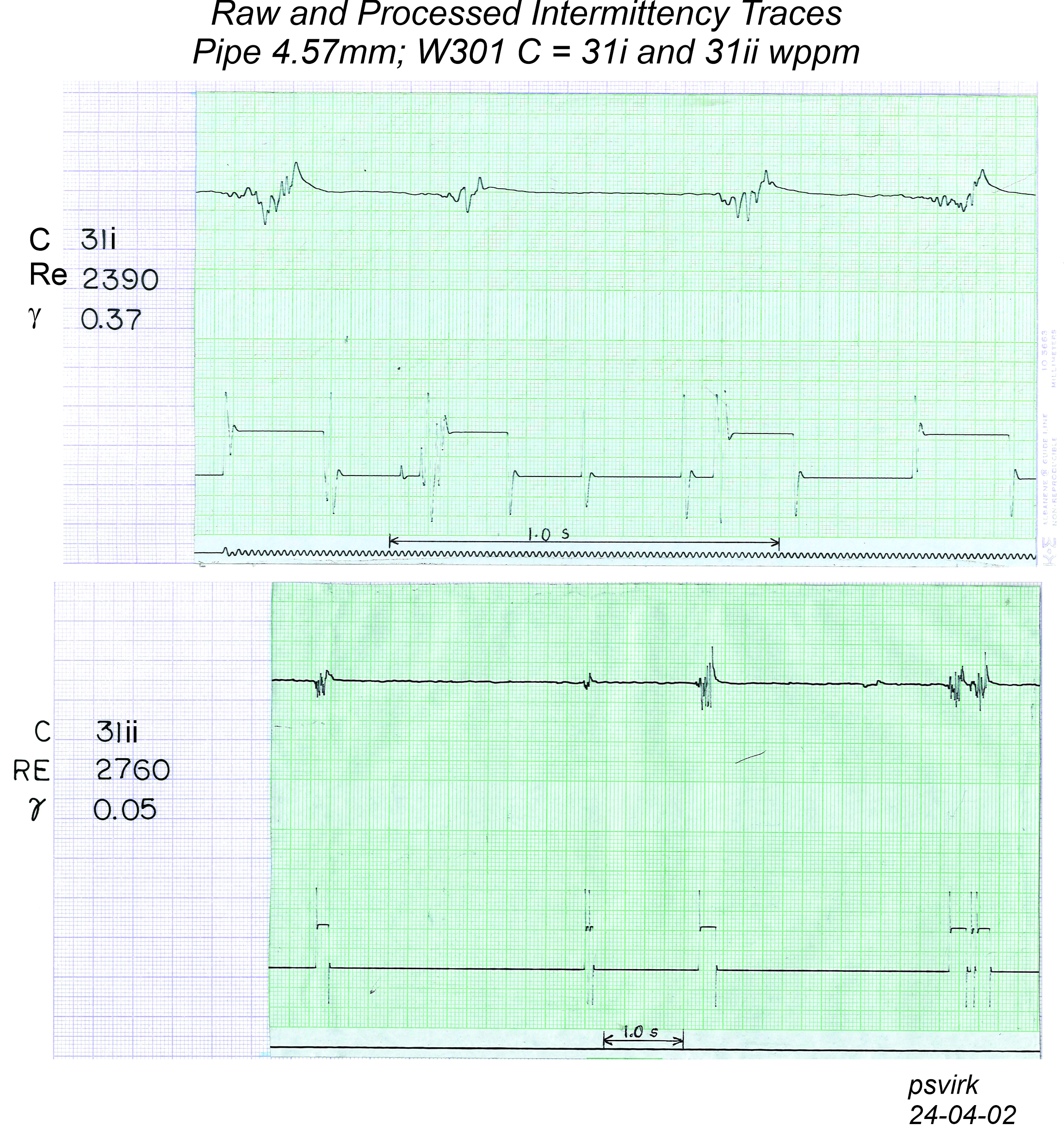Three types of laminar-to-turbulent transitions are possible during Type A drag reduction by random-coiling polymers, namely L → N, into a regime without drag reduction, prior to onset; L→ P, into the polymeric regime of drag reduction, after onset; and L → M, into the regime of asymptotic maximum drag reduction.
This work explores intermittency during the laminar-to-turbulent transitions of two nominally identical (31 ± 1) wppm deionized water DW solutions of Polyethyleneoxide W301, molecular weight 5.2 x 106, in a seamless 316 stainless steel pipe of ID 4.57 mm and length 200 diameters which was probed at its exit by a hot-film anemometer located at the pipe centerline.
The pipe and polymer were chosen such that the critical wall shear stress Twc for transition exceeded the onset wall shear stress Tw* for drag reduction so the polymer solutions reduced drag immediately upon attaining turbulent flow. Friction factor data for each of the two 31 wppm solutions, called 31i and 31ii, showed similar transition regions from solvent (Re, f) = (1900, 0.0084) to nearly maximum drag reduction (Re, f) = (2700, 0.0067). However, profound differences between 31i and 31ii were observed in their intermittency factors γ. The critical Reynold numbers Rec for (DW, 31i, 31ii) = (1992, 1880, 2005), that is, one below and one above that for solvent. This pattern persisted to γ = 0.25 where Re (DW, 31i, 31ii) = (2310, 2285, 3020). Representative raw and processed intermittency traces for 31i at (Re, γ) = (2390, 0.37) and 31ii at (Re, γ) = (2760, 0.05) are presented in Figure 1. Broadly, the intermittency curve for 31i showed an extended transitional interval 0 < γ < 1 for 1900 < Re < 3100 relative to DW 0 < γ < 1 for 1950 < Re < 2650. In contrast, while 31ii exhibited turbulent slugs over the range 2000 < Re < 3200, the intermittency factors were much lower than solvent; and for Re > 3200 turbulent slugs could not be clearly detected amid the continuous turbulence that emerged, reaching γ ~ 1 at Re ~ 3500. Upon reducing Re < 3200, turbulent slugs reappeared, so the intermittency reproducibly switched off and on above and below Re ~ 3200.
The foregoing observations suggest that there exists a cusp, not hitherto reported, where the laminar-to-turbulent transitional behavior switches between type L → P, with turbulent slugs and intermittency, and type L → M, without turbulent slugs. The present 31i and 31ii solutions, of near identical concentrations, were evidently both close to the cusp, with 31i lying towards L → P and 31ii crossing over from L → P to L → M at Re ~ 3200.
Figure 1.


